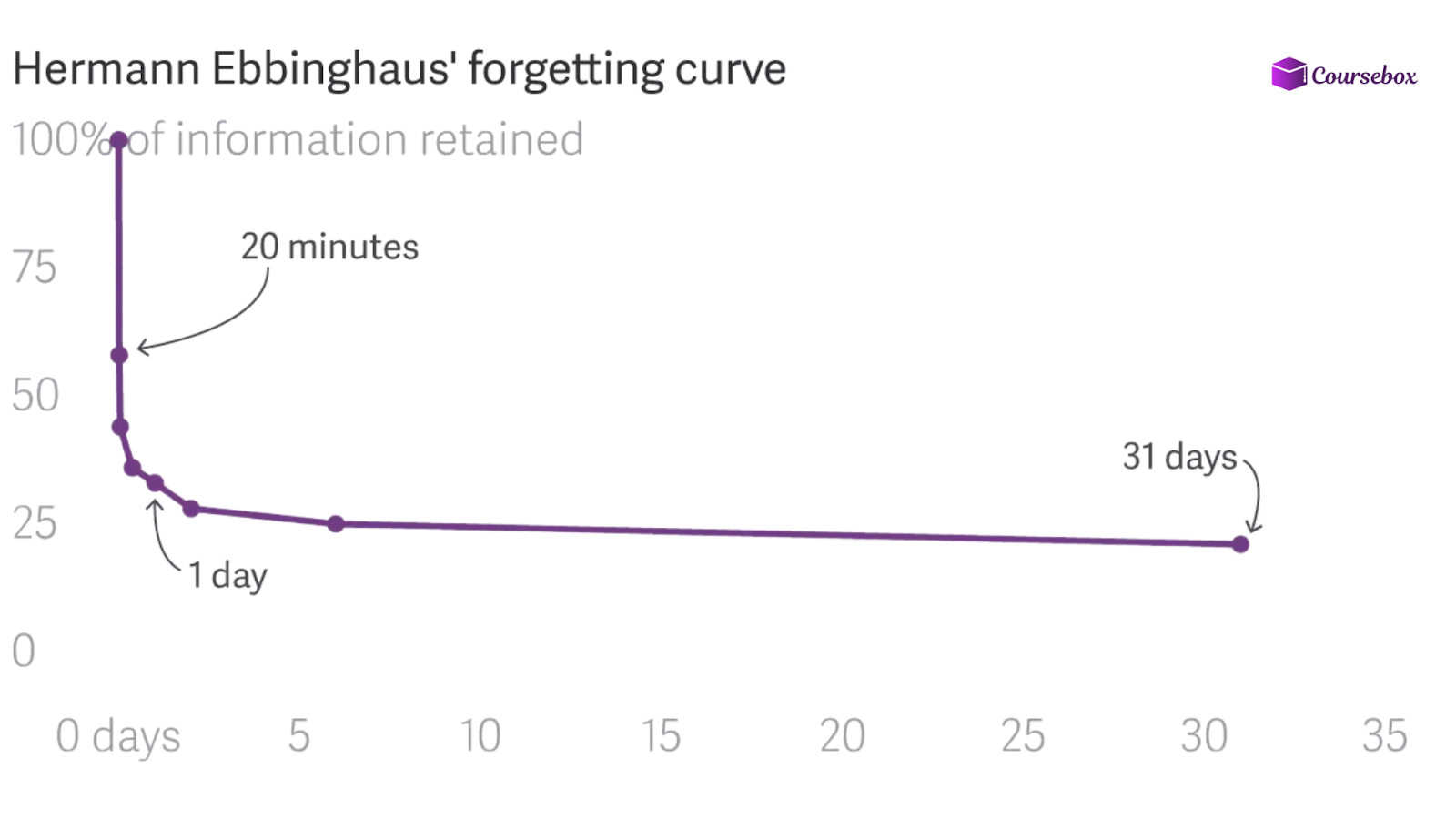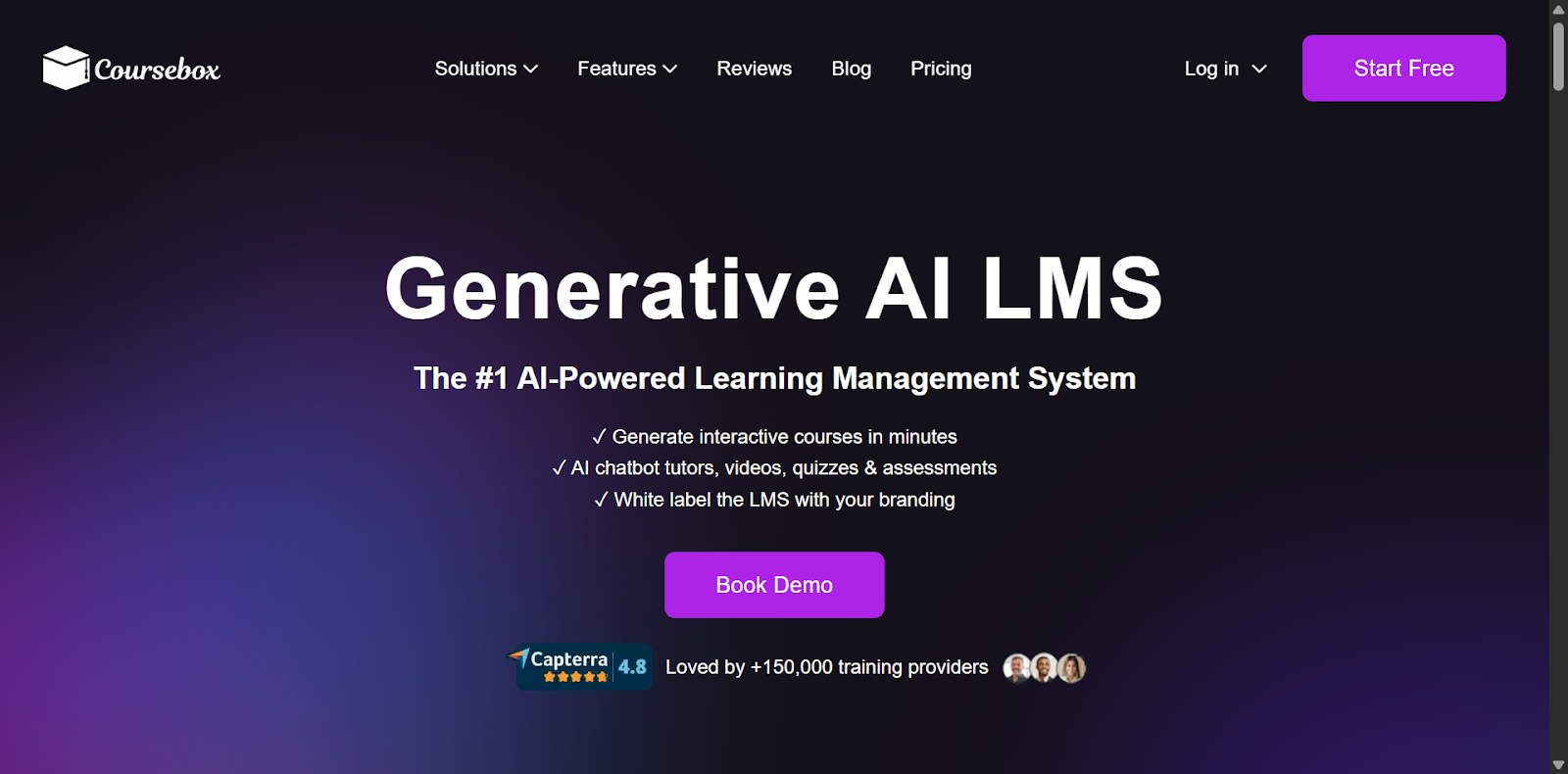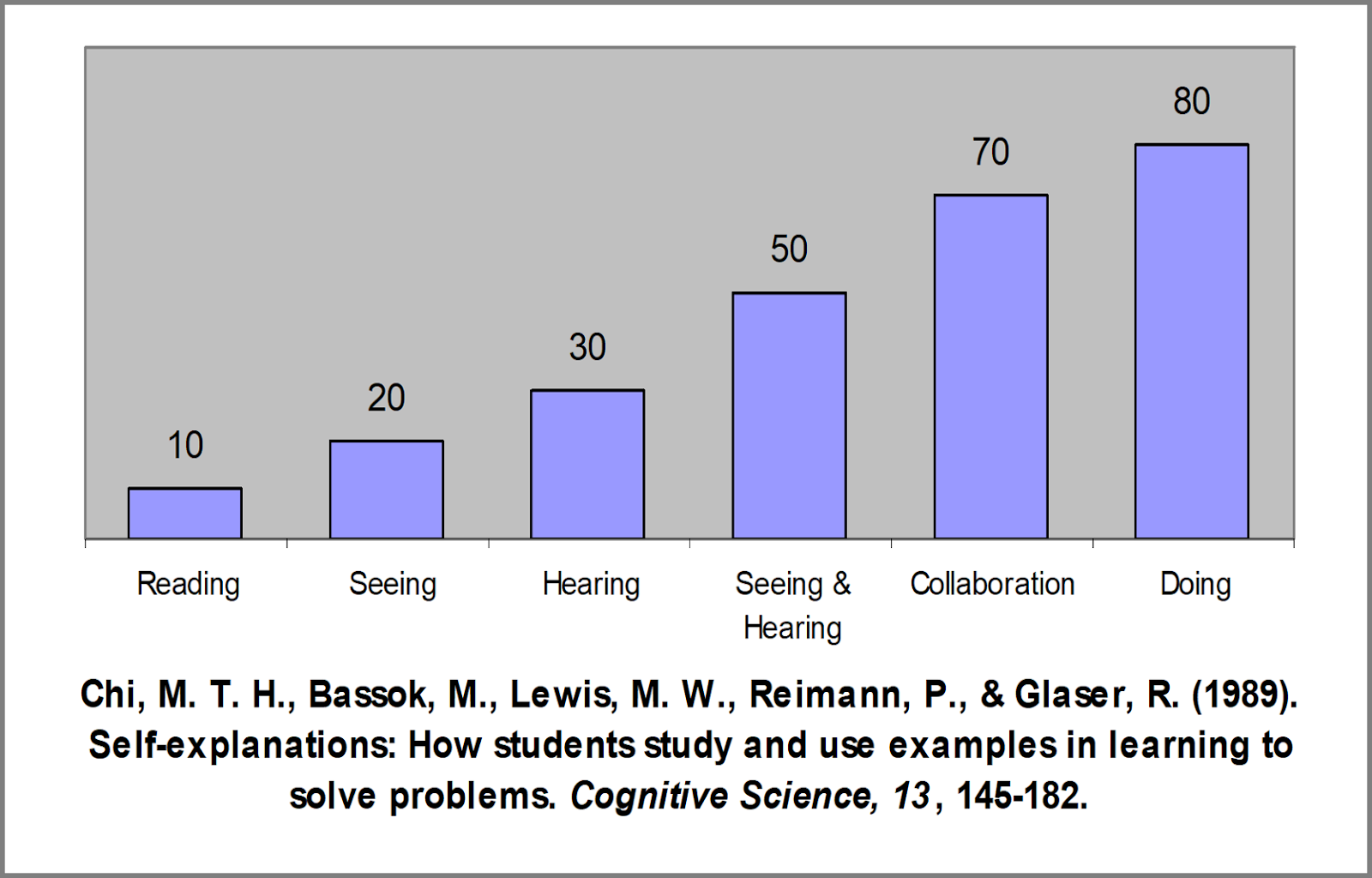How to Build a Repetitive Learning Method Program for Adult Learners
Wondering why most adult learning programs fail? Discover how to build a repetitive learning method program to boost retention and engagement.
Wondering why most adult learning programs fail? Discover how to build a repetitive learning method program to boost retention and engagement.

Studies show that adults forget up to 75% of new information within just six days if it isn’t reinforced or revisited. This means traditional “one-and-done” training sessions rarely lead to any real skill development.
That’s why most organizations need a repetitive learning method to keep the learners engaged. This approach helps adults learn through cycles of exposure, practice, reflection, and refinement.
So, if you’re struggling to build programs that increase retention, we’ll help you out in this guide. You’ll learn how to design a repetitive learning method step-by-step so you can build training programs that work.

The human brain treats information like files. If something is only seen once, the brain labels it as “temporary.” In fact, the Ebbinghaus Forgetting Curve indicates that adults forget 90% of new information within a week without reinforcement.
But when that same information is revisited and used again, the brain upgrades it to "important,” which strengthens the neural connections that store it.
Moreover, research from UCLA Health shows that repetition strengthens neural pathways, which improves recall and confidence when applying new skills.
Now, you must have understood why learning is about encountering information repeatedly in various contexts.
Adults don’t learn because they were exposed to information. They learn only when they are repeatedly exposed, at spaced intervals, in multiple formats, and then apply what they learned.
Here’s how you can also build a repetitive learning method that actually engages your employees and helps them retain information:
Every successful repetitive learning method begins with knowing what you want learners to achieve. Without clear goals, repetition becomes noise instead of reinforcement. Adults need to know why they are learning something and what the expected outcome is.
Start by asking: What should the learner be able to do confidently after this program?
A goal like “understand safety procedures” is vague and impossible to measure. But it’s better to make it clearer, like:
“Perform the 6-step safety procedure without external guidance.”
This step is quite important as SMART learning objectives have been shown to increase performance by 33% by giving the brain a target to organize learning around.

When you define the goal first, repetition becomes intentional. Moreover, you know exactly what needs reinforcing.
Once learning goals are clear, break your content into small, digestible pieces. Adults do not learn well from long lectures or overwhelming information dumps. Microlearning is productive as the brain retains short bursts of information more quickly.
Rather than a single 60-minute training module, divide the content into 5 to 10-minute segments, each covering a single concept.
For instance:
This bite-sized learning improves attention span, recall rate, and willingness to repeat. In fact, microlearning has been shown to make learning 17% more effective because the brain can retain one idea at a time.

Spaced repetition is the backbone of the repetitive learning method. Instead of repeating content all at once (cramming), you spread repetition over time. If not, the brain rapidly forgets the info after 24–48 hours.
To implement this:
Every time a learner revisits the concept, repetition becomes a strategy rather than an accident.
Repetition is not just doing the same thing over and over; it's exposing the brain to the same information in multiple ways.
It’s because adults are known to have different learning preferences (visual, auditory, experiential).
Some examples of multiple learning formats include:
This shifts repetition from passive to active. It means the learner will now hear the thing three times rather than just twice.
One of the best tools for offering different learning formats is Coursebox. They have an AI-powered LMS that can help create courses easily. So, if you’re struggling to find the best way to offer learning, Coursebox might be the ideal solution.

Most people think that repetition is more than enough to create mastery among the employees. However, they couldn't be more wrong.
Adult learners don’t just want to know information; they want to use it. This is why the repetitive learning method performs best when repetition is paired with real situations.
According to the National Training Laboratory’s Learning Pyramid, adults remember:

If we count on it, the fastest way to make learning stick is to push learners into scenarios where they apply the information in a real or simulated environment.
For example, if the topic is “handling objections in sales,” learners should not simply read slides or listen to a lecture. You should guide them into practicing a real objection-handling script or role-playing a client call.
At this stage, your goal is to create small, controlled challenges that trigger recall. This forces the brain to retrieve information and strengthens the neural pathway.
Example structure:
The final step is where a repetitive learning method becomes intelligent. Here, you don’t need to endlessly repeat content and just measure whether the learner is progressing and adjust repetition accordingly.
Tracking progress also signals when repetition should continue or when it can move to the next phase.
You can track progress by:
If the learner demonstrates mastery, move forward. However, if they struggle, repeat that module again, but in a different format. The change of format (video → real application → quiz) prevents repetition from feeling stuck or boring.
Even the best repetitive learning methods tend to fail if your tools don’t support ongoing practice, spaced repetition, and learner tracking.
The right tools make repetition automatic. They help learners revisit content without losing interest and let you track how well the repetition is working. These tools also reduce your workload by handling scheduling, reminders, and performance tracking for you.
Below are four essential tool categories that help build a practical ecosystem for repetitive learning.
A Learning Management System (LMS) acts as a central hub for your repetitive learning program. This is where learners can access lessons, assignments, videos, microlearning modules, quizzes, and progress reports.
An LMS makes repetition simple as it:
Systems like Coursebox are ideal for repetitive learning, as they are built for microlearning and ongoing reinforcement. Unlike traditional LMS platforms that dump all content at once, this platform lets you release small modules gradually.
Assessments are critical because repetition without feedback becomes guesswork. The purpose of these assessments is not to judge, but to measure employee retention and identify areas that require additional attention.
Adult learners typically benefit from assessments that provide instant feedback, reveal knowledge gaps, and recommend the next learning step.
These assessments can be simple:
Practical assessment tools show learners where they have gone wrong, which ultimately enhances retention. One of the best tools offered by Coursebox is an AI Assessment & Grading tool. It helps administrators create assessments within minutes using AI and automatically grades your students for quick feedback.

Flashcards are effective as they force the brain to retrieve information, strengthening long-term memory pathways.
These flashcards, as per Harvard, accelerate learning when combined with spaced repetition, since retrieving information requires active recall. And that’s the strongest learning mechanism.
Digital flashcards are ideal as they:
You can use tools like Anki or Quizlet. They offer free spaced-repetition flashcards that automatically schedule cards based on learner performance. This means every learner gets a personalized repetition path without extra effort from you.
In short, flashcards support the repetitive learning method by reinforcing small, digestible pieces of content repeatedly.
Repetition is powerful only when you know what’s working. Analytics reveal which modules learners repeat most frequently, where learners tend to drop off, and how much time learners spend on each lesson.
Here, tools like Google Forms and Coursebox help you understand whether the repetition cycle is building mastery or just consuming time.
Feedback, such as e-learning feedback surveys, turns repetition into continuous improvement. And by combining that with real data, you can refine training materials, adjust your spaced-repetition intervals, or redesign lessons where learners consistently struggle.
Here are the common mistakes that you should avoid while creating a repetitive learning method program:
A repetitive learning method only works when knowledge is reinforced consistently and delivered in a way the learner can apply in real life. Adult learners do not improve by consuming more content; they improve by revisiting key concepts and ideas.
However, if you’re stuck on which platform to choose to make the entire program work, Coursebox is the way to go.
Rather than spending weeks manually designing training, it lets you convert documents into interactive courses in minutes. With Coursebox, your repetitive learning program becomes engaging, trackable, and impossible to forget.
The best LMS tools for repetitive learning are those that release content in small intervals, track progress, and trigger spaced repetition. For instance, platforms like Coursebox and Moodle allow drip-feeding lessons and microlearning units. A good LMS should also include analytics, so you can see what learners are retaining.
The best method is to break content into microlearning units. Research shows that adults learn best when information is presented in small chunks that they can absorb quickly. Each module should take 5–10 minutes, followed by a quick quiz or flashcard review.
Yes. Repetitive learning is highly effective for complex skills such as communication, leadership, and decision-making. The key is to reapply. In place of rereading theory, learners practice through simulations, role-plays, scenario tasks, or hands-on exercises. The more frequently learners apply a skill, the more confident they become.
Regular training usually delivers information once and assumes retention. Revision typically happens after learning is completed. It introduces a concept, then reinforces it repeatedly over time through spaced repetition and practice.
